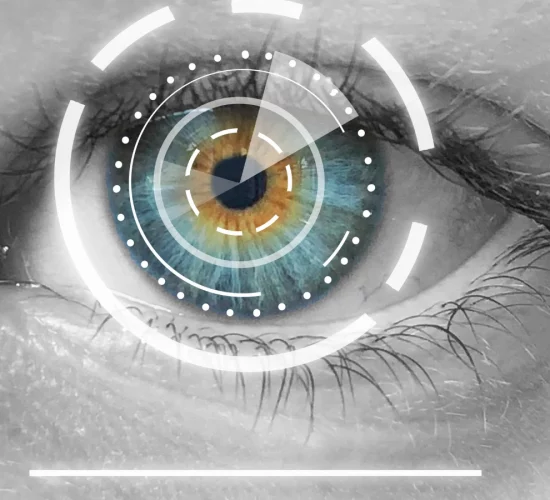Check out our guest blog post below from Jennifer Sala
If you’ve been in the Lyme community for very long you are probably aware current diagnostic tests are only about 50% accurate anyway, even in patients who present with a bullseye rash like I did as a kid. They can neither accurately confirm, discount, nor indicate the level of infection.
Borrelia burgdorferi are uniquely evasive and resilient bacteria, and are difficult to treat or manage beyond a short window immediately after the tick bite.
The bacteria takes on human cell proteins to hide from the immune system so as not to be attacked by the body’s defenses. This causes false negatives in a standard antibody test. Furthermore, the spirochetes can’t be cultured after they advance to later phases of development in a host so they may not be detected by tests at that point.
That being said, if you don’t know you were bit, they’ve usually evolved past doxycycline’s effective period, the growth phase, by the time you develop symptoms. That can take weeks or months. In some cases, it may even take years. In my case, I was just a kid and didn’t know to show anybody the rash or tell them about the bugs I found biting me. It’s Maine, everything leaves a nasty bite!
The good news for the future of early Lyme diagnosis is that RightEye is coming to the rescue! They’re a trail-blazing ocular biomarker company, studying eye movement behavior. Using revolutionary eye-tracking technology, they create cutting-edge vision care and are active in crucial medical research that now includes Lyme Disease.
In late April, RightEye entered an agreement with MIT to establish an oculomotor signature for Lyme Disease diagnosis. Instead of relying on faulty panel tests, they should be able to pinpoint Lyme infection by scanning a patient’s eyes.
Being a multisystemic disease, the eyes can be profoundly impacted by Lyme, so it’ll be interesting to see what they find. Surely they’ll be able to see those annoying “floaters” with ease.
According to Dr. Robert Weinberg of Johns Hopkins, “Ophthalmologists should be suspicious of Lyme disease in patients with any form of intraocular inflammation.” He says conjunctivitis, periorbital edema, and/or aversion to light can begin to manifest early after onset of infection. Later on, such as in Post Treatment or Chronic Lyme, it can progress to eye conditions like keratitis, iridocyclitis, retinal detachment, optic neuritis, disc edema, oculomotor palsy, and even more.
If RightEye and MIT are able to establish what kinds of signatures these conditions make when cause by Lyme, they should be able to create a much more accurate diagnostic tool to take the conjecture out of diagnosing cases confidently.
This could be a huge advancement in Lyme diagnosis and could allow for more rapid diagnosis once the technology becomes readily available. “This could lead to interventions that may reduce or even mitigate chronic symptoms after Lyme disease,” said Dr. Michal Caspi Tal, visiting scientist to MIT’s Bioengineering department.
Research like this often takes a year or more, so it’ll be some time before it’s rolled out, but with the current projections this problem won’t be going away any time soon. It’s a great hope for the future that younger generations could get better, faster help than ever before using this amazing pivotal technology.
It’s crazy how prevalent this has become, and it’ll only get worse, according to statistics.
Last week I was just sitting on the outdoor stage at a local park, thinking about a research project I’m working on, when three actors walked up for a rehearsal. One of them mentioned not liking to walk through grass since he had Lyme, then a second agreed.
Being a Lyme enthusiast (for lack of better word) I started a conversation. It turns out, neither of them could get a diagnosis for a long time, but are mostly improved now.
What are the odds there are four strangers in a park and three had undiagnosed Lyme? Higher and higher every day.
A few days later I was holding my Lyme Support Group when a gentleman walks into the center, not expecting it to be open on Sunday. He asked what was going on. We said it was a Lyme group and his face lit up. “No way!” he says and pulls out a chair to get comfortable. “Get this!” and he proceeded to tell us his long story with Lyme.
Talking with another couple in the last week or so, I heard several stories about local people suffering with long undiagnosed Lyme, including an entire family.
The more it spirals out of control the more awareness needs to be raised, and the strides in research should be made known so we can show our support and appreciation for the efforts. RightEye’s clever new project is one that definitely should be praised, and just in time for May, Lyme Disease Awareness Month.
About Jennifer Sala
I was undiagnosed with Lyme for at least 20 years and picked up co-infections all along the way from multiple different bites. Because of the delayed diagnosis and lack of support I received, I started studying herbalism as a teenager to help manage my symptoms. At 18, I had been hospitalized and pronounced terminal from infection-induced kidney necrosis, but given no details on the nature of the infection or referrals for follow-up care when I was released. I’ve already outlived the odds they gave me. My research is ongoing and, as a research writer and consultant with a lifetime of Lyme, I am always excited for opportunities to work with researchers on articles, case studies, and proposals – anything that will advance progress in favor of the people!
Book
In honor of Lyme Disease Awareness Month. I made some revisions to my book, A Holistic Perspective On Lyme Disease & Co-Infections, and made it available on Amazon. It is by no means a comprehensive guide, but it reflects a lot of the aspects I consider most important to understand. Check it out on KindleUnlimited for free, or you can order a paper copy.






